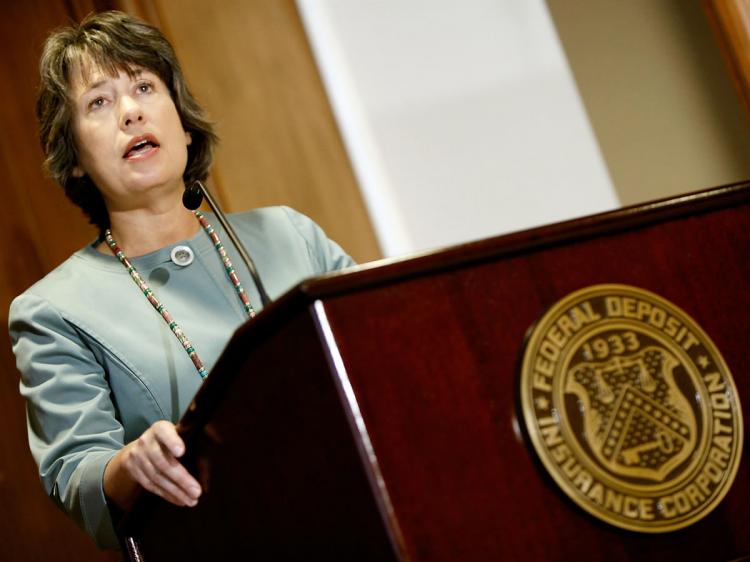Adding fuel to the fire, FDIC’s deposit insurance fund, which offers consumers protection against bank failures, saw its assets decrease by 20 percent during the second quarter to $10.4 billion, the lowest level since the savings and loans crisis of the late 1980s.
The FDIC is a federal government entity that insures all U.S. customer accounts of up to $250,000 (until 2013) held at member banks. The agency released its quarterly banking report on Thursday.
The banking industry as whole reported losses of $3.7 billion in the second quarter, and the number of institutions on the FDIC’s “problem list” increased from 305 to 416, the largest number of “problem” institutions since 1994, the report said.
Bank Failures Weigh on Insurance Fund
FDIC’s deposit insurance fund took a nosedive during the last quarter, as 24 U.S. banks with combined assets of $26.4 billion failed during the second quarter, according to the report.
Stepping in to reimburse consumers who have lost their savings due to bank failures, FDIC’s insurance fund saw its value drop 20 percent to $10.4 billion as of June 30. Several costly and large bank failures occurred at the beginning of this year.
FDIC Chair Sheila Bair tried to downplay the significance of the FDIC’s dwindling coffers.
“The FDIC was created specifically for times such as these,” she said in a statement. “No matter how challenging the environment, the FDIC has ample resources to continue protecting depositors as we have for the last 75 years. No insured depositor has ever lost a penny of insured deposits... and no one ever will.”
“We expect the number of problem banks and failures will remain elevated even as the economy begins to recover,” she said.
Between a Rock and a Hard Place
In the third quarter already two of the year’s bigger failures have hit FDIC’s funds—Southeastern regional bank Colonial Group and Texas regional bank Guaranty Bank. Colonial became the largest bank failure of 2009 and is expected to cost FDIC $2.8 billion.
Earlier this year, Bair attempted to push bigger fees onto banks to support FDIC’s insurance fund in anticipation of more bank failures. At the time, many smaller U.S. banks fought back, arguing that the healthy banks are essentially bankrolling the major players who have played with fire.
In addition, the banks argued, each dollar the banks give the FDIC is one dollar less to lend to small businesses and consumers.
Back then, they had a point. But in recent months the giant banks have regained their footing and it is now the smaller regional banks feeling the pain, hurt by mortgage losses.
Economy researcher Chris Martenson thinks the FDIC itself may be to blame.
“While protecting depositors is a good thing, the FDIC also encourages bad banks to engage in risky behaviors, because there’s no detectable reason for depositors to prefer one bank over the other,” Martenson wrote in his column on Seeking Alpha, a stock market research site. “All pay essentially the same rate of interest, and all the monies are FDIC-insured. Bad banks that take on a lot of risk make huge profits compared to their more sedate competitors. Before you know it, perilously risky lending is the new normal.”
“And then the bad times hit, the bad banks are bailed out, and their safer competitors are left paying for their mistakes,” he continued.
“And here we are, reaping the ’rewards’ of this well-intentioned—but ultimately destructive—government program.”







Friends Read Free